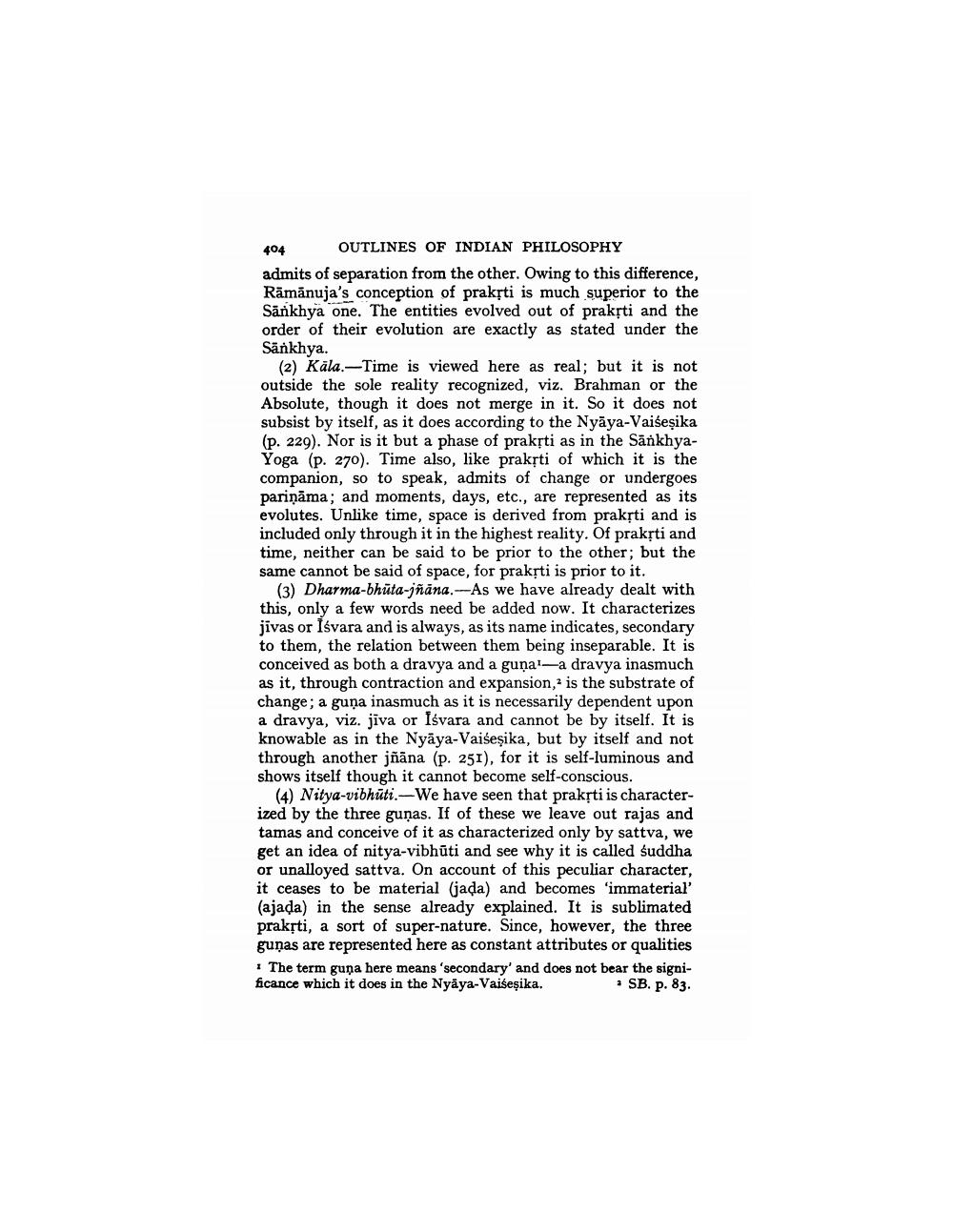________________
404 OUTLINES OF INDIAN PHILOSOPHY admits of separation from the other. Owing to this difference, Ramanuja's conception of prakrti is much superior to the Sankhya one. The entities evolved out of praksti and the order of their evolution are exactly as stated under the Sankhya.
(2) Kāla.-Time is viewed here as real; but it is not outside the sole reality recognized, viz. Brahman or the Absolute, though it does not merge in it. So it does not subsist by itself, as it does according to the Nyāya-Vaišeşika (p. 229). Nor is it but a phase of praksti as in the SankhyaYoga (p. 270). Time also, like praksti of which it is the companion, so to speak, admits of change or undergoes pariņāma; and moments, days, etc., are represented as its evolutes. Unlike time, space is derived from praksti and is included only through it in the highest reality. Of praksti and time, neither can be said to be prior to the other; but the same cannot be said of space, for praksti is prior to it.
(3) Dharma-bhūta-jñāna.-As we have already dealt with this, only a few words need be added now. It characterizes jivas or Iśvara and is always, as its name indicates, secondary to them, the relation between them being inseparable. It is conceived as both a dravya and a gunal--a dravya inasmuch as it, through contraction and expansion, is the substrate of change; a guņa inasmuch as it is necessarily dependent upon a dravya, viz. jiva or Isvara and cannot be by itself. It is knowable as in the Nyāya-Vaiseşika, but by itself and not through another jñāna (p. 251), for it is self-luminous and shows itself though it cannot become self-conscious.
(4) Nitya-vibhuti.-We have seen that prakrti is characterized by the three gunas. If of these we leave out rajas and tamas and conceive of it as characterized only by sattva, we get an idea of nitya-vibhūti and see why it is called suddha or unalloyed sattva. On account of this peculiar character, it ceases to be material (jada) and becomes 'immaterial (ajada) in the sense already explained. It is sublimated praksti, a sort of super-nature. Since, however, the three guņas are represented here as constant attributes or qualities · The term guna here means 'secondary' and does not bear the significance which it does in the Nyaya-Vaišeşika.
- SB. p. 83.




